The Fiat 147 has captured the hearts of automotive enthusiasts across Latin America for decades. This compact Brazilian icon isn’t just a reliable daily driver – it’s a blank canvas waiting for your creative touch. We’ve witnessed countless 147s transform from humble economy cars into street-dominating machines that turn heads everywhere they go.
Whether you’re dreaming of extracting more power from that trusty engine or completely overhauling your ride’s appearance, the tuning possibilities are virtually endless. From performance upgrades that’ll make your 147 roar to aesthetic modifications that showcase your personal style, this versatile platform responds beautifully to enhancement.
We’re here to guide you through the most effective tuning strategies that deliver real results without very costly. Get ready to unlock your Fiat 147’s hidden potential and join the ranks of passionate tuners who’ve discovered what this legendary car can truly become.
What Is the Fiat 147 and Why Tune It?
The Fiat 147 emerged as a compact Brazilian-made vehicle in 1976, becoming one of Latin America’s most successful automotive productions with over 3.7 million units manufactured until 1996. Fiat designed this front-wheel-drive hatchback specifically for developing markets, featuring a simple yet robust mechanical layout that prioritizes reliability over complexity.
Brazil served as the primary production hub, where the 147 utilized locally sourced components and adaptations suited for regional road conditions. The vehicle’s compact dimensions (3.83 meters in length) and lightweight construction made it particularly appealing to urban drivers seeking economical transportation.
Production specifications include:
| Specification | Details |
|---|---|
| Production Years | 1976-1996 |
| Total Units | 3.7+ million |
| Length | 3.83 meters |
| Engine Options | 1.0L, 1.3L, 1.5L |
| Transmission | 4-speed manual, 5-speed manual |
| Drive Type | Front-wheel drive |
Modern tuning enthusiasts gravitate toward the Fiat 147 because its mechanical simplicity creates an accessible modification platform. The car’s straightforward carburetor systems, conventional suspension geometry, and readily available aftermarket parts make performance upgrades achievable for beginners and experienced tuners alike.
Key tuning advantages include:
- Lightweight chassis responds dramatically to power increases
- Simple engine bay accommodates various modification approaches
- Abundant parts availability keeps modification costs reasonable
- Strong aftermarket support provides specialized components
- Proven reliability maintains daily drivability after modifications
The 147’s original engine lineup spanning from 1.0-liter to 1.5-liter displacements offers multiple starting points for power enhancement projects. Each engine variant accepts common modifications like carburetor upgrades, exhaust system improvements, and internal component enhancements without requiring extensive fabrication work.
Suspension tuning particularly benefits from the 147’s MacPherson strut front design and semi-independent rear setup, allowing for predictable handling improvements through shock absorber upgrades and spring modifications. The vehicle’s balanced weight distribution creates a responsive foundation that rewards careful suspension tuning with noticeable performance gains.
Popular Fiat 147 Tuning Modifications
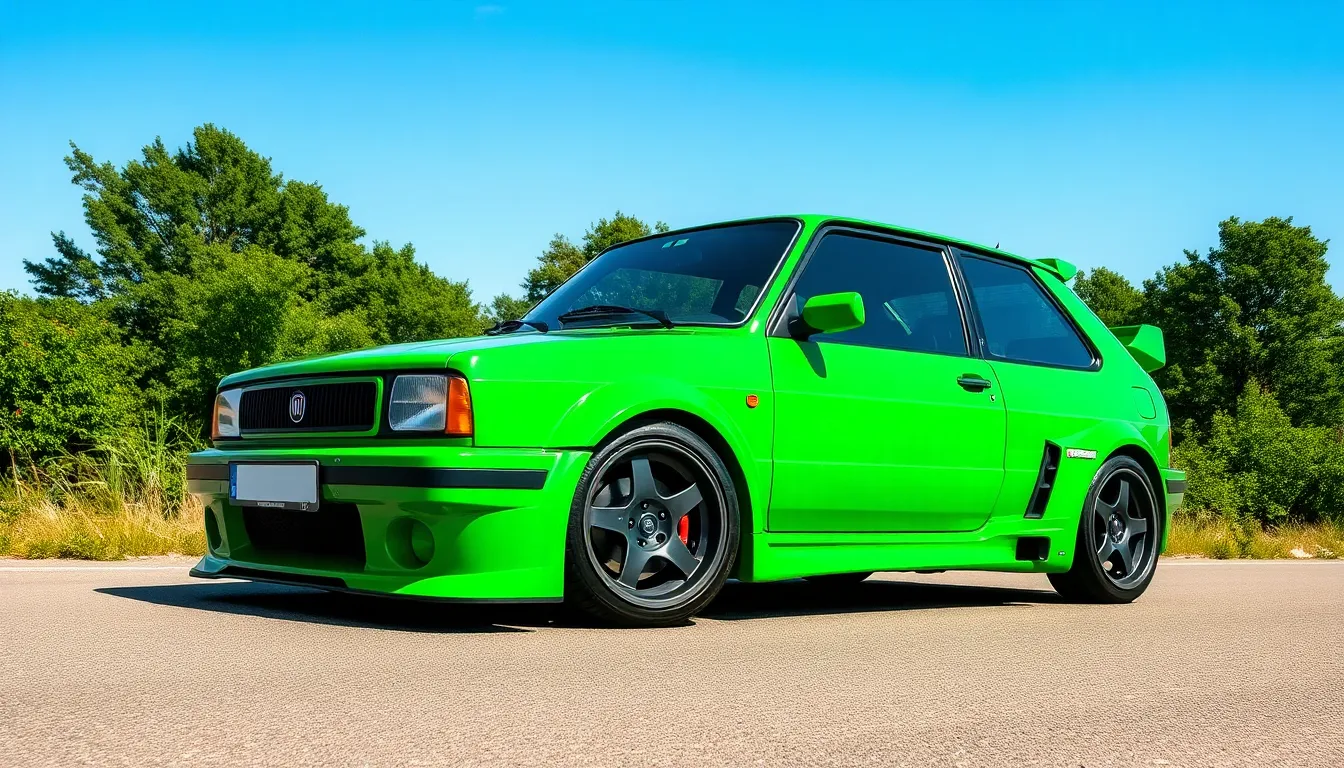
Popular modifications for the Fiat 147 range from simple bolt-on upgrades to comprehensive performance overhauls. We’ve identified the most effective modifications that deliver maximum impact while maintaining the vehicle’s reliability and character.
Engine Performance Upgrades
Engine modifications form the foundation of any serious Fiat 147 tuning project. Carburetor upgrades represent the most accessible starting point, with Weber carburetors delivering immediate throttle response improvements and increased power output across the RPM range.
Cold air intake systems boost engine breathing efficiency by drawing cooler, denser air into the combustion chambers. Performance exhaust systems reduce backpressure while creating the distinctive sound that enthusiasts appreciate. Headers and exhaust manifolds optimize exhaust flow patterns, typically adding 10-15% more power when combined with proper tuning.
Camshaft upgrades alter valve timing to extend the powerband and increase peak output. Compression ratio modifications through piston changes or cylinder head work unlock additional performance potential. Electronic ignition conversions replace traditional points-based systems, providing more precise timing control and improved reliability under high-performance conditions.
| Modification | Power Gain | Cost Level | Difficulty |
|---|---|---|---|
| Weber Carburetor | 8-12 HP | Moderate | Intermediate |
| Cold Air Intake | 3-5 HP | Low | Beginner |
| Performance Exhaust | 5-8 HP | Moderate | Intermediate |
| Camshaft Upgrade | 12-18 HP | High | Advanced |
Suspension and Handling Improvements
Suspension modifications transform the Fiat 147’s driving dynamics from basic transportation to captivating performance vehicle. Lowering springs reduce body roll while improving the vehicle’s stance and aerodynamic efficiency.
Performance shock absorbers control wheel movement more effectively than stock units, maintaining tire contact with road surfaces during aggressive driving. Sway bars minimize body lean in corners by connecting opposite wheels and distributing cornering forces more evenly across the chassis.
Strut braces strengthen the front suspension mounting points, reducing chassis flex and improving steering precision. Polyurethane bushings replace soft rubber components throughout the suspension system, eliminating deflection and providing more direct road feedback.
Wider wheels and performance tires increase grip levels and cornering capabilities. Brake upgrades become essential when adding important power, with larger disc conversions and performance pads providing the stopping power to match enhanced acceleration.
Exterior Styling Modifications
Exterior modifications allow Fiat 147 owners to create distinctive visual statements while potentially improving aerodynamic performance. Body kits alter the vehicle’s profile and can include front spoilers, side skirts, and rear wings that enhance both appearance and airflow management.
Custom paint schemes and vinyl graphics personalize each build according to owner preferences. Period-correct racing stripes and sponsor decals recreate the aesthetic of 1980s motorsport competition vehicles.
Wheel upgrades serve dual purposes of improving performance and visual impact. Classic designs like Compomotive wheels or period BBS rims maintain authenticity while modern interpretations offer contemporary styling options.
Lighting modifications include upgraded headlights and taillights that improve visibility and modernize the vehicle’s appearance. Custom grilles and bumper treatments further distinguish individual builds from standard vehicles.
Interior Customization Options
Interior modifications focus on improving comfort, functionality, and aesthetic appeal. Racing seats provide better lateral support during spirited driving while reducing overall vehicle weight compared to heavy factory units.
Performance steering wheels offer improved grip and often feature smaller diameters for enhanced control feedback. Gauge clusters monitor vital engine parameters like oil pressure, water temperature, and boost levels when forced induction modifications are present.
Sound deadening materials reduce road noise and improve audio system performance. Custom upholstery in leather or racing fabrics creates distinctive cabin environments that reflect owner preferences.
Roll cages enhance safety during track use while adding structural rigidity to the chassis. Quick-release mechanisms for various components help maintenance access and theft deterrence in competition environments.
Essential Tuning Parts and Components
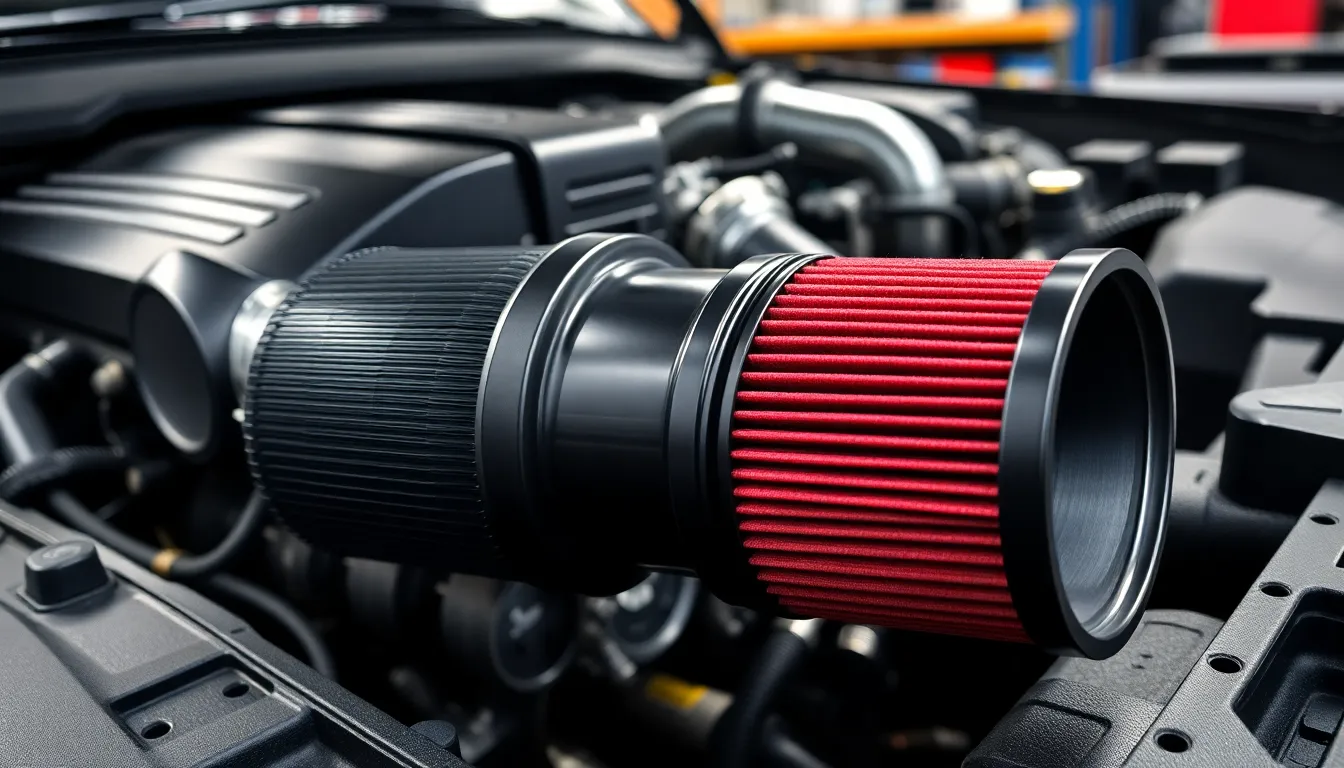
Performance enhancement components form the foundation of any successful Fiat 147 modification project. We focus on three critical systems that deliver measurable improvements in power output and driving dynamics.
High-Performance Air Intake Systems
Cold air intake systems represent the most accessible entry point for Fiat 147 engine modifications. These systems replace the restrictive factory airbox with high-flow filters and mandrel-bent tubing that draws cooler air from outside the engine bay.
Performance gains typically range from 5-8 horsepower on naturally aspirated engines when paired with proper tuning. Popular brands like K&N and AEM manufacture universal kits that adapt perfectly to the Fiat 147’s engine bay configuration.
Key components include:
- High-flow cone filters with oiled cotton or synthetic materials
- Heat shields to maintain intake air temperatures below ambient levels
- Velocity stacks to optimize airflow into the throttle body
- Mass airflow sensor relocations for fuel injection equipped models
Installation requires basic hand tools and takes approximately 2-3 hours for most enthusiasts. We recommend monitoring air/fuel ratios after installation to ensure optimal engine performance across the entire RPM range.
Exhaust System Upgrades
Exhaust modifications unlock trapped horsepower by reducing backpressure and improving scavenging effects. Header upgrades provide the most important performance benefits for Fiat 147 engines compared to cat-back systems alone.
Tubular headers with 4-into-1 or 4-into-2-into-1 configurations increase power output by 8-12 horsepower when combined with free-flowing mufflers. Ceramic coating on headers reduces underhood temperatures and prevents corrosion in humid climates.
Complete system components include:
- Stainless steel or mild steel headers with equal-length primary tubes
- High-flow catalytic converters for emission compliance
- Resonator deletes or straight-through designs for sound enhancement
- Performance mufflers with chambered or straight-through internals
Diameter selection varies between 1.75-2.25 inches for naturally aspirated applications. We measure existing pipe diameters before ordering components to ensure proper fitment with factory mounting points.
ECU Remapping and Chip Tuning
Electronic engine management modifications maximize the potential of intake and exhaust upgrades through optimized fuel and ignition maps. Standalone engine management systems offer the most comprehensive tuning capabilities for heavily modified Fiat 147 builds.
Piggyback systems like the Unichip or interceptor modules provide tuning flexibility while retaining factory ECU functionality. These systems typically add 10-15% more power when combined with supporting modifications and professional tuning.
Tuning options include:
- Factory ECU reflashing for fuel-injected models with EPROM chips
- Standalone systems from Megasquirt, Haltech, or AEM for comprehensive control
- Piggyback controllers for mild to moderate performance increases
- Wideband oxygen sensors for accurate air/fuel ratio monitoring
Professional dyno tuning ensures optimal performance and reliability across all operating conditions. We recommend establishing baseline power figures before modifications to measure actual gains from each upgrade component.
Cost Considerations for Fiat 147 Tuning
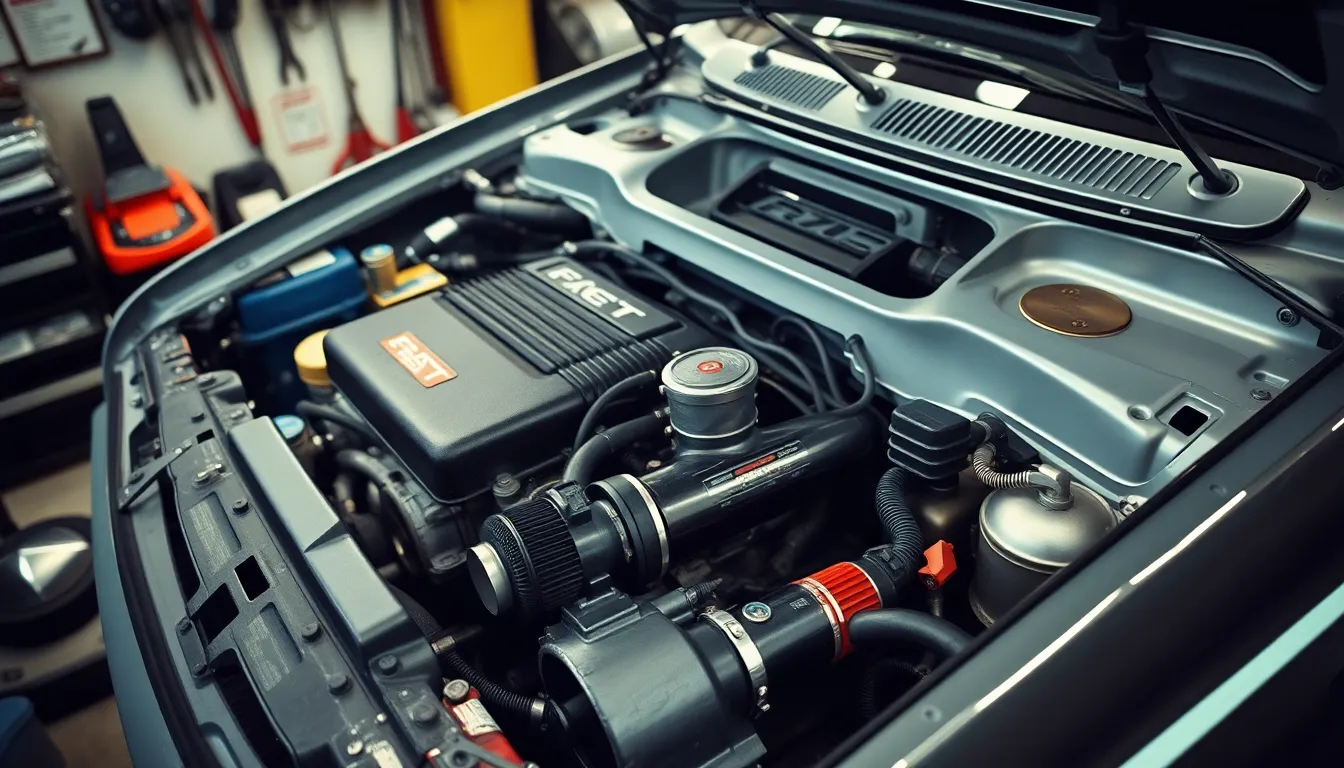
Budget allocation for Fiat 147 tuning varies significantly based on your performance goals and modification approach. Entry-level enthusiasts can achieve noticeable improvements with $500-800 invested in basic intake and exhaust upgrades. Mid-range tuning projects typically require $1,500-3,000 for comprehensive engine modifications including carburetor upgrades, performance camshafts, and suspension enhancements.
Budget-Friendly Modifications
Cold air intake systems represent the most cost-effective starting point at $150-300 per installation. Performance air filters like K&N or Fram Extra Guard deliver improved airflow for under $50. Carburetor jetting modifications cost approximately $80-120 and provide measurable power gains when performed correctly.
Exhaust system upgrades offer excellent value proposition with header installations ranging from $200-400. Complete cat-back exhaust systems cost $300-600 depending on material quality and brand selection. DIY installation reduces labor costs by 60-70% compared to professional shop rates.
Mid-Range Performance Upgrades
Suspension modifications require larger investments but transform handling characteristics dramatically. Lowering springs cost $200-350 while performance shock absorbers add another $400-600 to your budget. Complete coilover systems range from $800-1,500 for quality setups.
Engine internal modifications escalate costs considerably with performance camshafts priced between $250-500. Port and polish work on cylinder heads costs $400-800 depending on shop rates and complexity. Forged pistons and connecting rods add $600-1,200 for complete rotating assembly upgrades.
High-End Tuning Investments
Turbocharger installations represent substantial financial commitments starting at $2,500-4,000 for basic setups. Custom fabrication work for unique modifications can cost $1,000-3,000 depending on complexity and shop expertise. Professional engine rebuilds with performance components range from $3,000-6,000.
| Modification Category | Budget Range | Performance Impact |
|---|---|---|
| Basic Intake/Exhaust | $300-800 | 5-15 HP gain |
| Suspension Package | $600-1,500 | Handling improvement |
| Engine Internals | $1,000-2,500 | 20-40 HP gain |
| Turbo Conversion | $2,500-5,000 | 50-100 HP gain |
| Complete Build | $5,000-10,000 | 100+ HP gain |
Professional labor rates average $75-120 per hour across most markets. Machine shop services for engine work typically cost $80-150 hourly. Specialized tuning dyno sessions range from $200-500 depending on complexity and required adjustments.
Parts availability significantly impacts overall project costs with genuine Fiat components commanding premium prices. Aftermarket alternatives often provide 40-60% savings while maintaining acceptable quality standards. Used parts sourcing through online forums and salvage yards can reduce expenses by 50-70% for non-critical components.
Maintenance costs increase proportionally with performance modifications requiring higher-grade fluids and more frequent service intervals. Racing oil changes cost $60-100 compared to standard $30-50 conventional services. Performance clutch replacements range from $400-800 versus $200-350 for stock units.
Common Challenges and Solutions
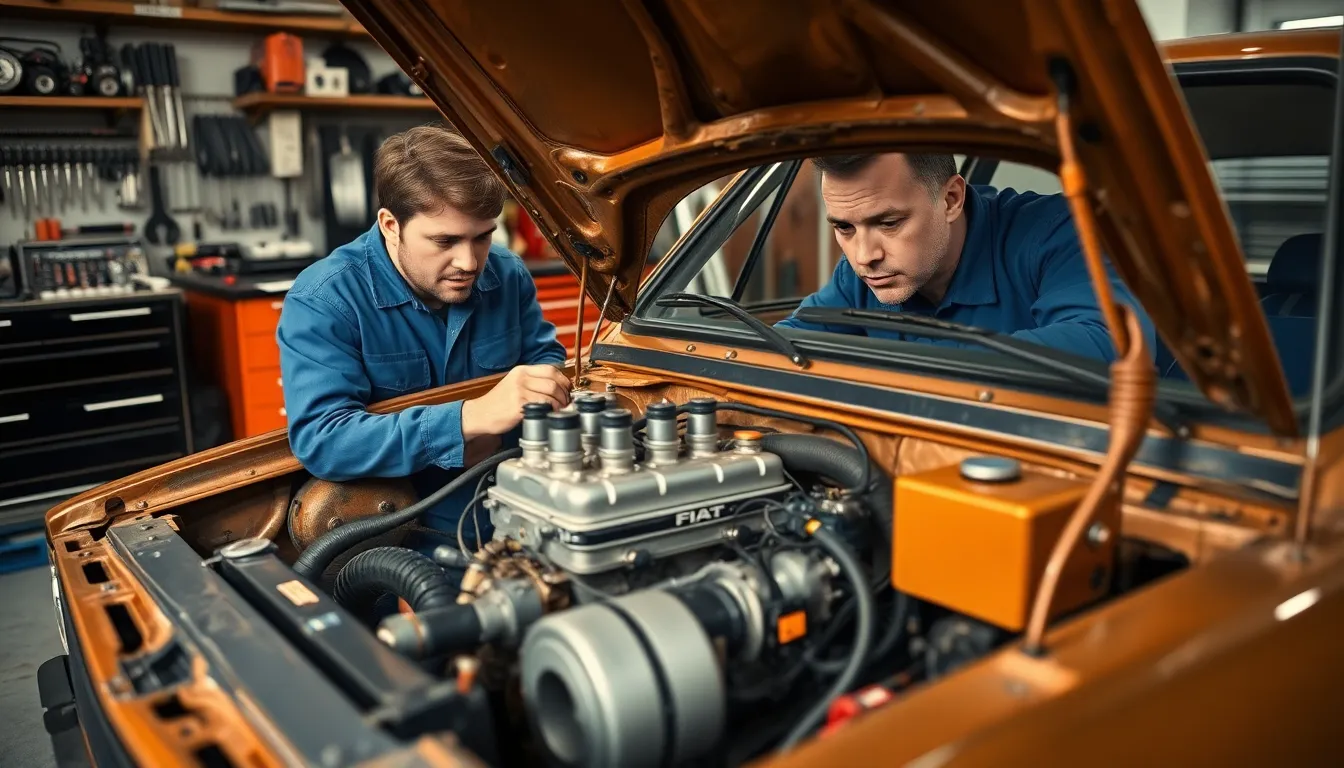
Tuning enthusiasts often encounter exact obstacles when modifying their Fiat 147 projects. We’ve identified the most frequent issues and developed practical answers to help you navigate these challenges effectively.
Parts Availability Issues
Locating original equipment manufacturer (OEM) parts for the Fiat 147 presents important challenges due to the vehicle’s discontinued production status. We recommend establishing relationships with specialized Brazilian automotive importers who maintain inventory connections with South American suppliers. These importers typically stock essential components like carburetor rebuild kits, suspension bushings, and electrical components that mainstream auto parts stores don’t carry.
Aftermarket manufacturers have filled critical gaps in parts availability for popular modification categories. Companies like Weber produce carburetor upgrade kits specifically designed for Fiat 147 applications, while suspension specialists manufacture lowering springs and performance shock absorbers compatible with the original mounting points. We suggest joining online Fiat 147 enthusiast communities where members frequently share reliable parts sources and group purchasing opportunities.
Fabricating custom brackets and adapters becomes necessary when installing modern performance components on the vintage platform. Local machine shops can reproduce discontinued mounting hardware using original parts as templates, though this approach requires additional time and budget allocation. We maintain a network of fabrication specialists who understand the unique mounting requirements of 1970s-1990s Fiat vehicles.
Technical Installation Tips
Engine bay access limitations require strategic planning before beginning any modification project on the Fiat 147. We remove the battery and air cleaner assembly first to create adequate working space around the carburetor and intake manifold areas. This preparation step prevents damage to surrounding components during installation of performance air intake systems or carburetor upgrades.
Electrical system modifications demand careful attention to the original wiring harness capacity and grounding points. We recommend installing a dedicated ground strap between the engine block and chassis when adding high-performance ignition systems or electric fuel pumps. The original 12-volt electrical system can handle moderate upgrades, but extensive modifications may require alternator upgrades and additional circuit protection.
Suspension component installation benefits from using proper spring compressors and alignment tools to ensure safe and accurate assembly. We always mark the original suspension settings before making adjustments, allowing for easy restoration of factory specifications if needed. MacPherson strut installations require precise torque specifications of 65 ft-lbs for the upper mounting nuts and 85 ft-lbs for the lower ball joint connections.
Carburetor tuning requires systematic adjustment procedures starting with idle mixture screws and progressing through acceleration pump settings. We use a vacuum gauge to establish baseline readings before making any adjustments, then fine-tune the air-fuel mixture using exhaust gas temperature measurements. This methodical approach prevents the common mistake of over-adjusting multiple systems simultaneously, which can create difficult-to-diagnose performance issues.
Best Tuning Shops and Resources
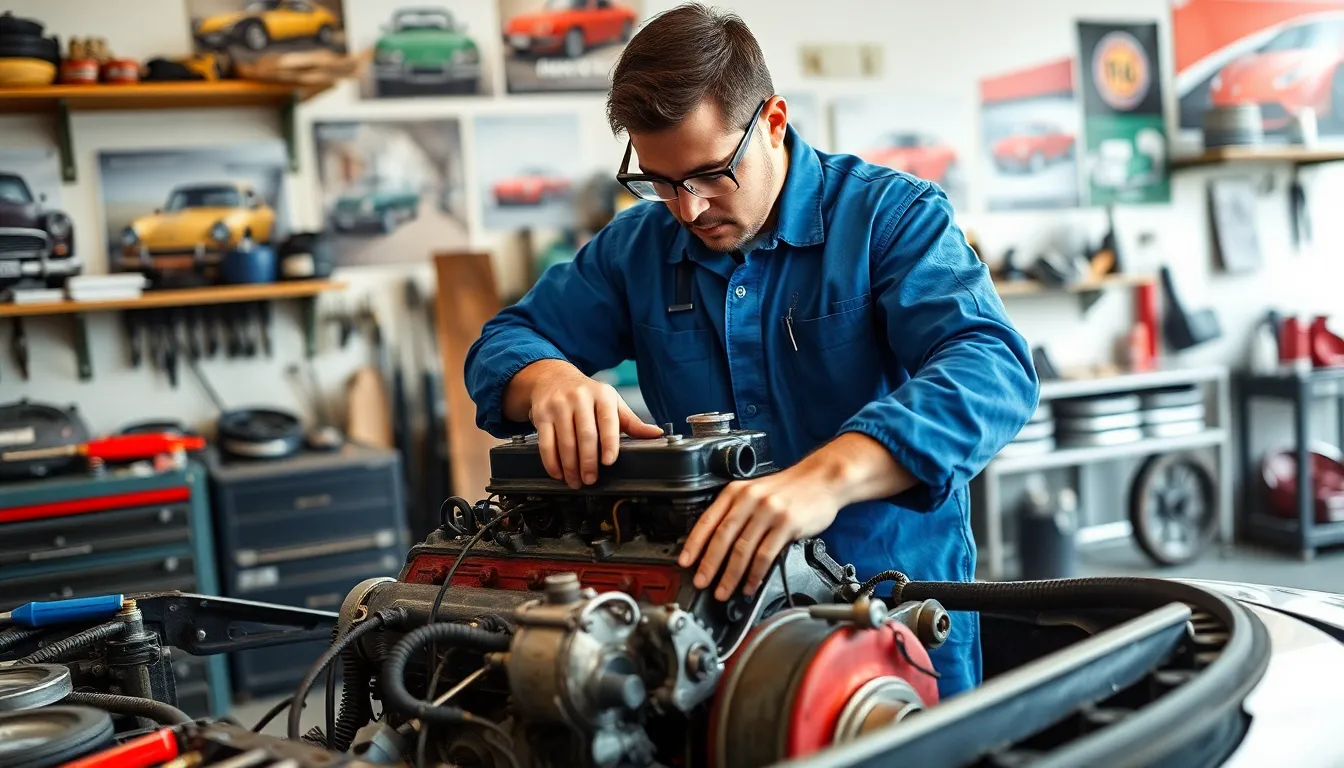
Finding reliable tuning shops and resources for Fiat 147 projects requires strategic research and community connections. Specialized automotive shops that focus on classic Brazilian vehicles often provide the most comprehensive services for these unique platforms.
Specialized Fiat 147 Tuning Shops
Brazilian automotive specialists across Latin America offer dedicated Fiat 147 tuning services with authentic parts access. Oficinas Auto Clásico in São Paulo maintains extensive Fiat 147 expertise with over 25 years of experience modifying these vehicles. Tuning shops like Performance Motors in Buenos Aires provide comprehensive engine rebuilding services and custom fabrication capabilities specifically for vintage Fiat models.
Regional automotive centers often stock hard-to-find components through established Brazilian supplier networks. Shops with direct connections to Fiat parts distributors can source original equipment components at competitive pricing. Professional tuning facilities typically charge $50-80 per hour for labor on Fiat 147 modifications.
Online Communities and Forums
Fiat 147 enthusiast communities provide invaluable technical knowledge and parts sourcing information. Club Fiat 147 Brasil maintains active forums with over 12,000 registered members sharing modification techniques and troubleshooting advice. Facebook groups dedicated to classic Fiat tuning connect enthusiasts across multiple countries for parts trading and technical discussions.
YouTube channels like “Preparação Fiat 147” offer detailed modification tutorials with step-by-step installation guides. Instagram accounts from experienced builders showcase completed projects and provide direct contact for custom work inquiries.
Parts Suppliers and Vendors
| Supplier Type | Examples | Specialty | Price Range |
|---|---|---|---|
| OEM Parts | Fiat Parts Brasil, Auto Pecas Classic | Original components | $25-300 |
| Performance | Speed Parts Argentina, Tuning Shop Chile | Aftermarket upgrades | $75-800 |
| Custom Fab | Metalworks São Paulo, Fabricación Custom | One-off components | $150-1,200 |
| Import Services | Brazilian Auto Imports, Classic Fiat Supply | Rare parts sourcing | $40-500 |
Established importers maintain inventory relationships with Brazilian manufacturers for continuous parts availability. Companies like Classic Fiat Supply offer comprehensive catalogs with over 800 Fiat 147 exact components. Performance vendors stock modern upgrades adapted for vintage Fiat applications including Weber carburetors and sport suspension components.
Technical Resources and Documentation
Service manuals and technical documentation provide essential reference material for complex modifications. Official Fiat 147 workshop manuals contain detailed specifications for engine timing, suspension geometry, and electrical systems. Digital archives maintained by Fiat enthusiast sites offer downloadable repair procedures and parts diagrams.
Technical bulletins from the original manufacturing period detail proper installation procedures for aftermarket components. Professional tuning guides exact to Fiat engines provide carburetor jetting charts and ignition timing specifications for various modification levels.
Regional Tuning Events and Meets
Car shows and tuning events offer opportunities to connect with experienced builders and parts suppliers. Annual Fiat 147 gatherings in Brazil attract hundreds of modified vehicles with vendor booths selling specialized components. Regional meets provide networking opportunities for finding local tuning resources and experienced mechanics.
Track days specifically organized for classic vehicles allow testing of modification results in controlled environments. Drag racing events popular in Latin American countries showcase high-performance Fiat 147 builds and connect enthusiasts with professional tuners.
Legal and Safety Considerations
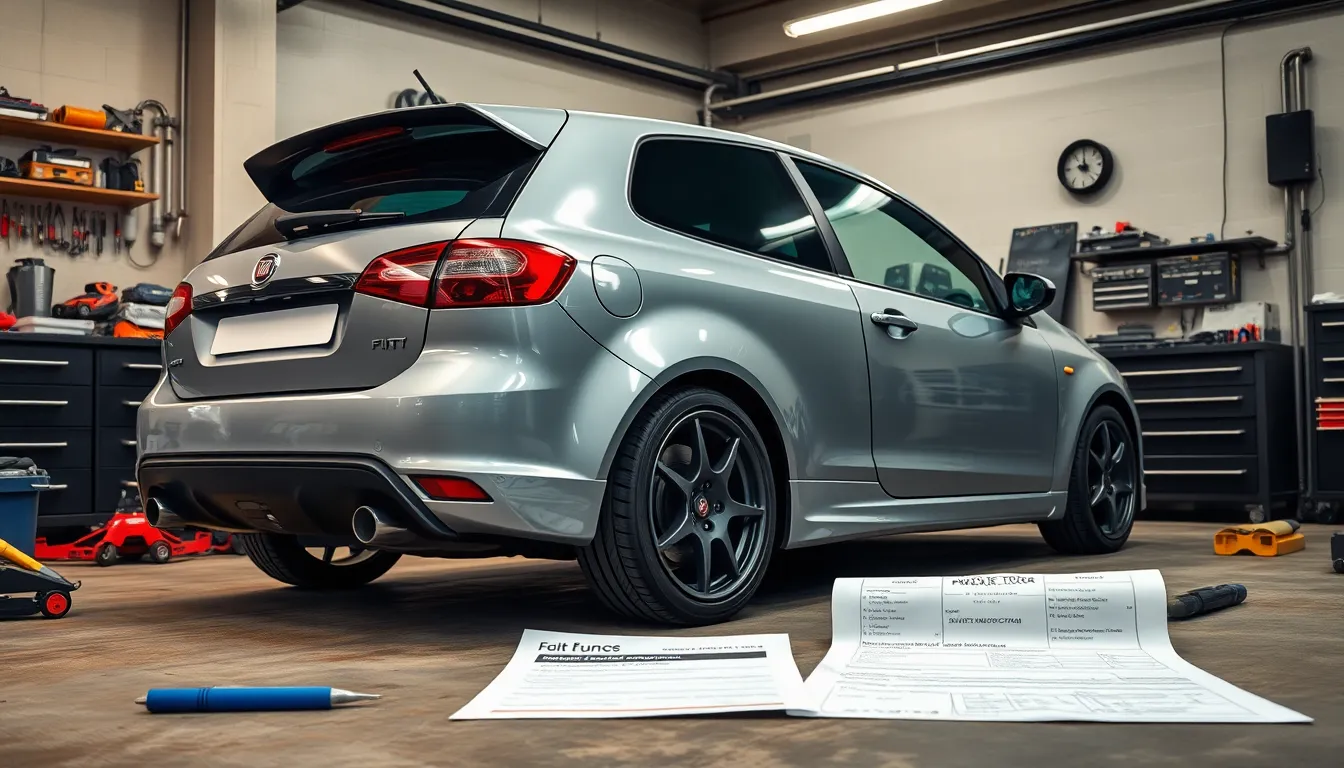
Legal compliance represents our primary responsibility when modifying a Fiat 147 for enhanced performance. Brazilian vehicle modification laws require exact documentation for engine swaps exceeding 20% power increases from factory specifications. Documentation must include emissions compliance certificates and safety inspection reports from certified automotive engineers.
Safety modifications become mandatory when installing performance upgrades that alter the vehicle’s original design parameters. Braking system upgrades are essential when increasing engine output beyond 30% of stock horsepower ratings. Suspension modifications require professional alignment and load testing to ensure safe handling characteristics under various driving conditions.
Insurance considerations affect tuned Fiat 147 ownership significantly across Latin American markets. Modified vehicles often face coverage restrictions or premium increases ranging from 25% to 75% above standard rates. Disclosure of all modifications to insurance providers prevents policy cancellation and ensures claim validity during accidents.
| Legal Requirement | Brazil | Argentina | Mexico |
|---|---|---|---|
| Engine swap documentation | Required >20% power | Required >25% power | Required >30% power |
| Emissions testing | Annual inspection | Bi-annual inspection | Annual inspection |
| Safety certification | Professional required | Professional required | Optional |
| Insurance disclosure | Mandatory | Mandatory | Recommended |
Street legality depends on exact modification types and their compliance with local transportation regulations. Exhaust systems must maintain decibel levels below 95dB in most urban areas to avoid traffic violations. Suspension lowering beyond 40mm from factory height often requires engineering certification to remain road legal.
Professional installation ensures both safety and legal compliance for complex Fiat 147 modifications. Certified mechanics understand local regulations and can provide necessary documentation for modified vehicles. DIY installations may void warranties and create liability issues if accidents occur due to improper modifications.
Regular safety inspections become crucial for heavily modified Fiat 147 vehicles to maintain roadworthiness. Brake performance testing should occur every 6 months when power output exceeds 50% of original specifications. Suspension geometry checks prevent premature tire wear and maintain predictable handling characteristics.
Emergency equipment requirements may change with important performance modifications to ensure driver and passenger safety. Fire extinguishers become recommended equipment when installing aftermarket fuel systems or turbocharger setups. Roll bars or safety cages are advisable for track-focused builds exceeding 150 horsepower output levels.
Conclusion
The Fiat 147 continues to prove itself as one of Latin America’s most rewarding tuning platforms. We’ve shown you how this compact Brazilian classic offers endless possibilities for customization while maintaining the reliability that made it legendary.
From budget-friendly intake and exhaust modifications to comprehensive suspension overhauls, your Fiat 147 can transform into a personalized performance machine. The key lies in understanding your goals, respecting your budget, and working with knowledgeable shops that specialize in these vehicles.
Remember that successful tuning goes beyond just adding parts—it requires careful planning, proper installation, and ongoing maintenance. With the right approach and community support, your Fiat 147 project will deliver years of driving satisfaction while honoring this iconic vehicle’s heritage.
Frequently Asked Questions
What makes the Fiat 147 a good platform for tuning?
The Fiat 147’s mechanical simplicity makes it an ideal tuning platform. Its straightforward carburetor systems, conventional suspension geometry, lightweight chassis, and abundant aftermarket parts availability create accessible modification opportunities for both beginners and experienced tuners. The simple engine bay layout allows easy access for upgrades.
How much does it cost to tune a Fiat 147?
Tuning costs vary by performance goals. Entry-level modifications cost $500-800 for basic upgrades like cold air intakes and exhaust systems. Mid-range projects require $1,500-3,000 for comprehensive modifications including suspension and engine internals. High-end turbocharger installations and custom fabrication can cost significantly more.
What are the most popular Fiat 147 performance modifications?
Popular modifications include carburetor enhancements, cold air intake systems, performance exhausts, camshaft upgrades, lowering springs, performance shock absorbers, and sway bars. These upgrades significantly improve power output and handling dynamics while maintaining the vehicle’s reliability and daily drivability.
Is it difficult to find parts for Fiat 147 tuning?
Parts availability can be challenging since production ended in 1996. However, establishing relationships with specialized Brazilian automotive importers helps access essential components. Strong aftermarket support and active online communities like Club Fiat 147 Brasil provide resources for sourcing both OEM and performance parts.
What legal considerations apply to Fiat 147 modifications?
Brazilian vehicle modification laws require documentation for engine swaps exceeding 20% power increases, including emissions compliance certificates and safety inspection reports. Modified vehicles must undergo regular safety inspections and comply with local regulations. Insurance providers should be notified of all modifications to avoid coverage issues.
Can beginners successfully tune a Fiat 147?
Yes, the Fiat 147’s mechanical simplicity makes it beginner-friendly for tuning projects. Starting with basic modifications like cold air intakes and exhaust upgrades allows newcomers to learn while achieving noticeable performance improvements. Online communities and specialized shops provide valuable guidance for first-time tuners.
What safety modifications are recommended for tuned Fiat 147s?
Essential safety upgrades include braking system enhancements to handle increased performance, professional alignment after suspension modifications, and regular safety inspections. These modifications ensure safe handling characteristics and maintain roadworthiness, especially important for heavily modified vehicles with significant power increases.







